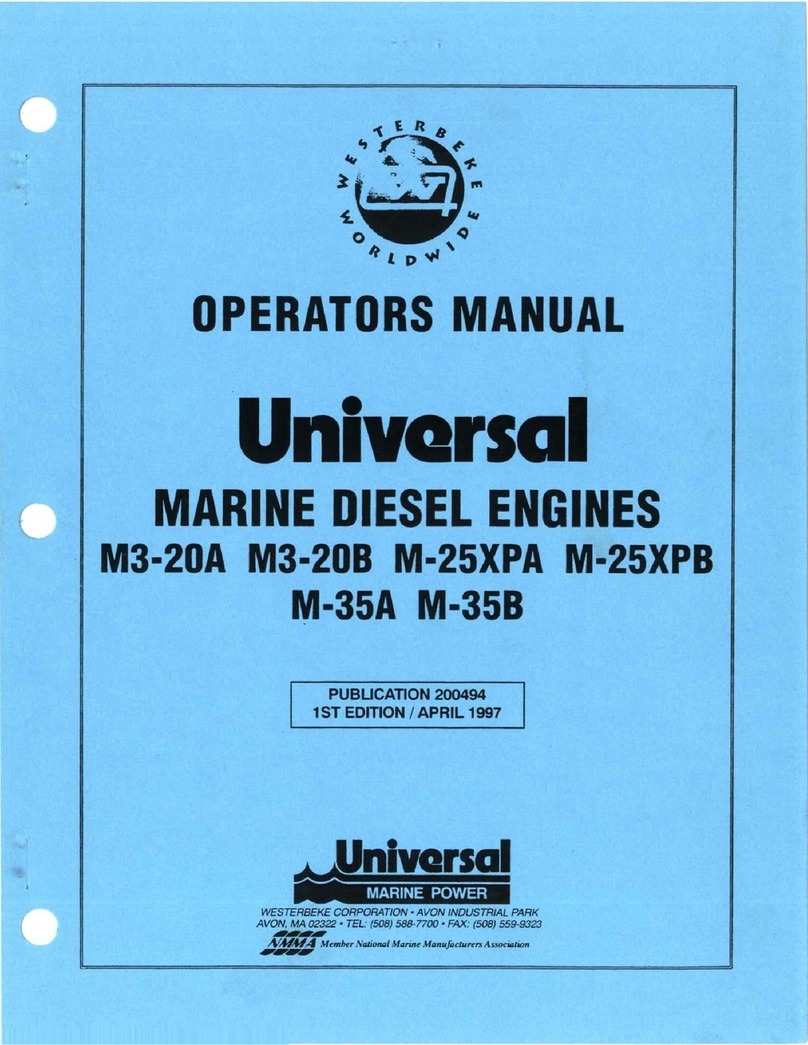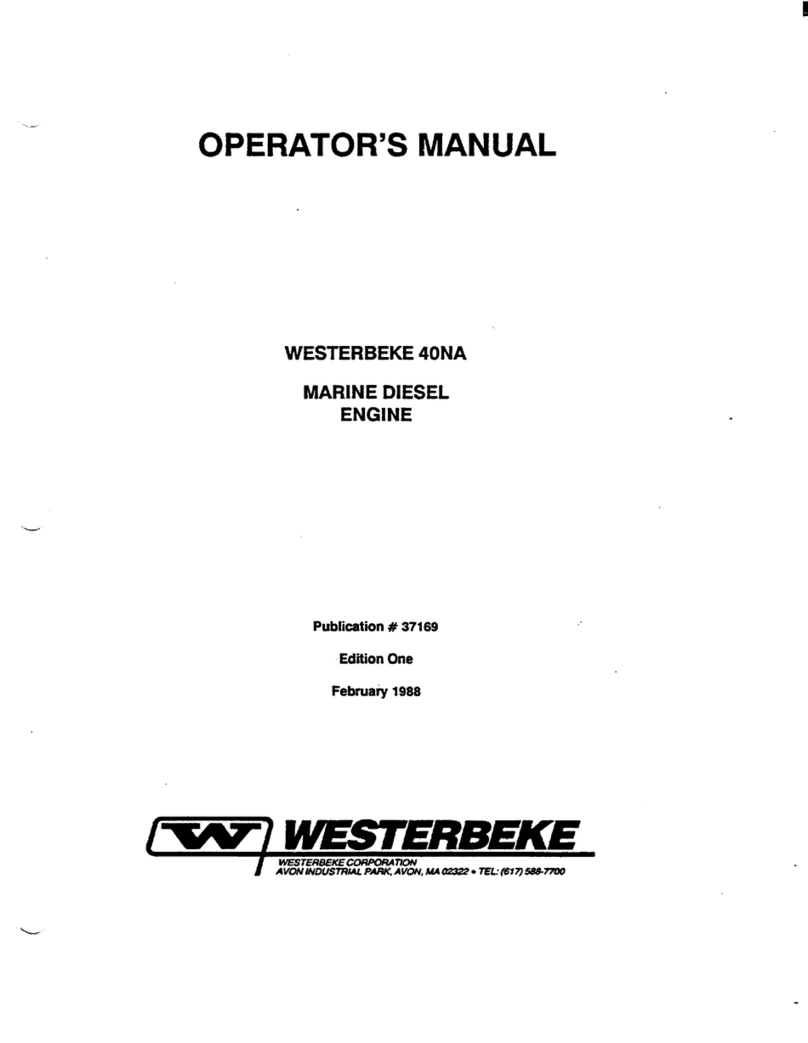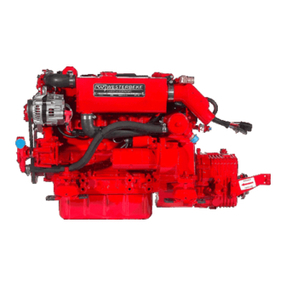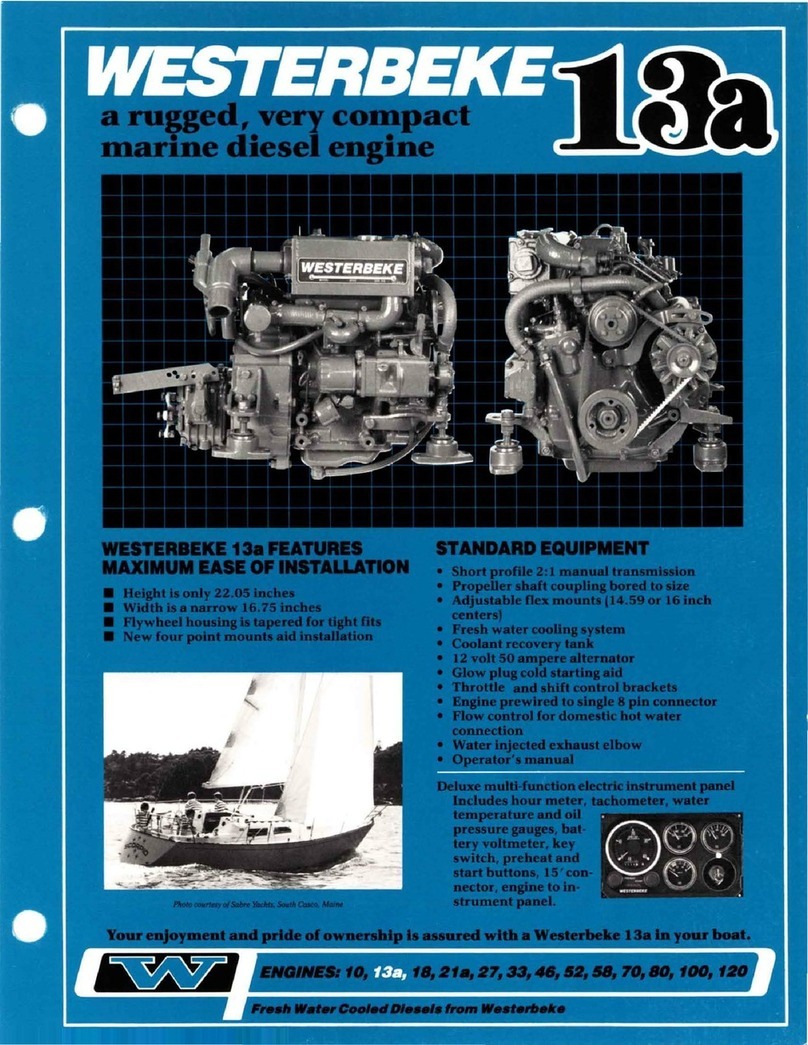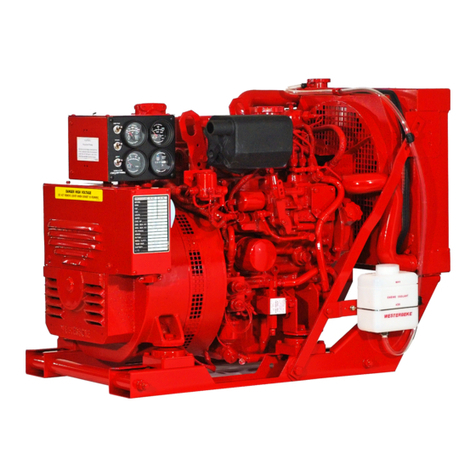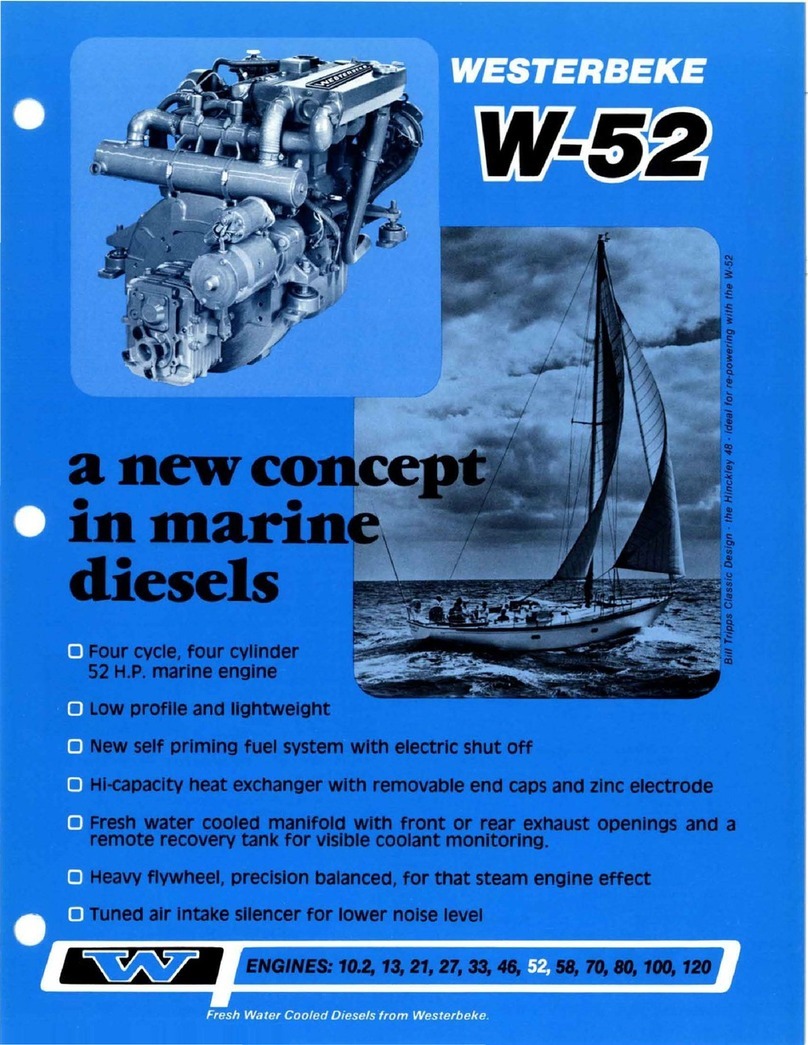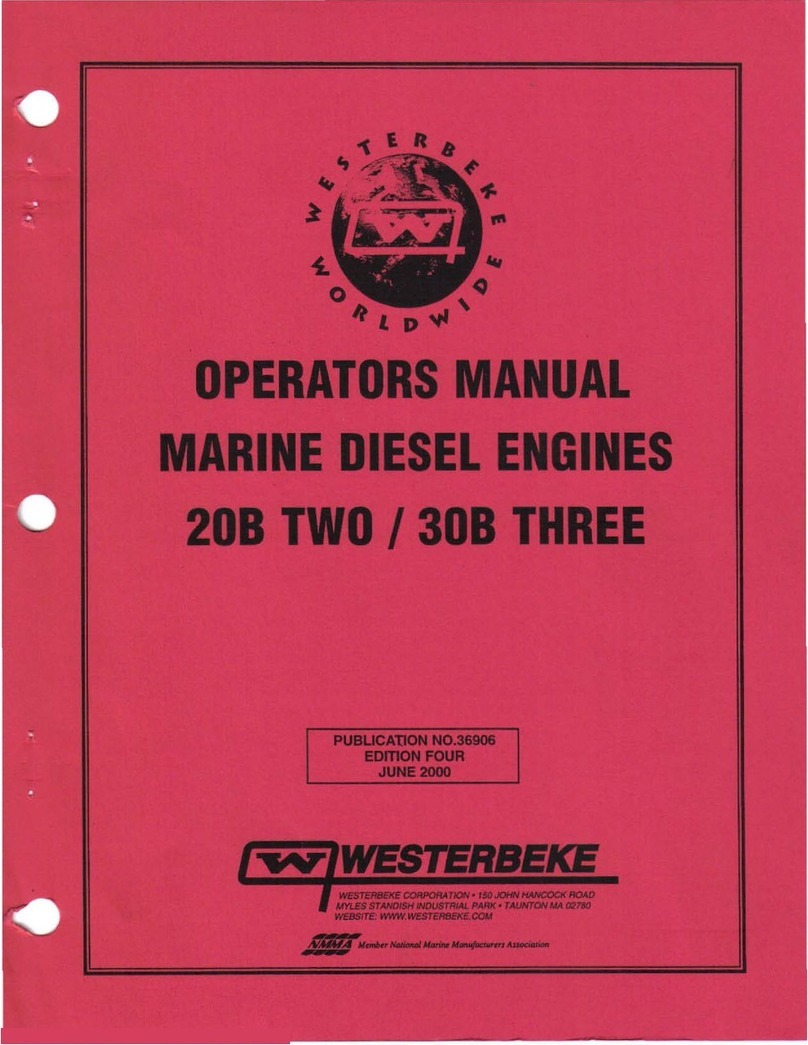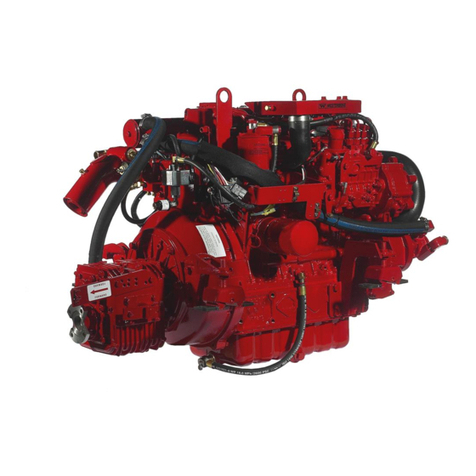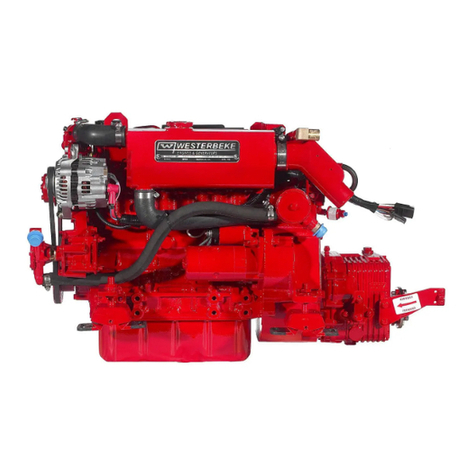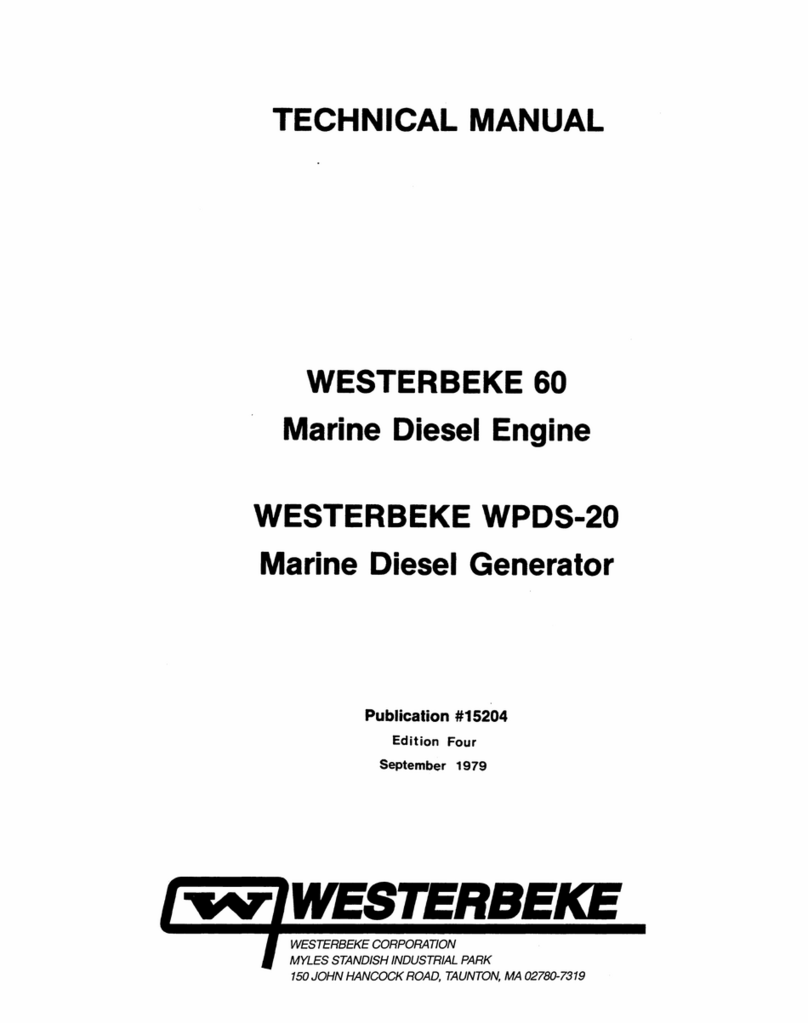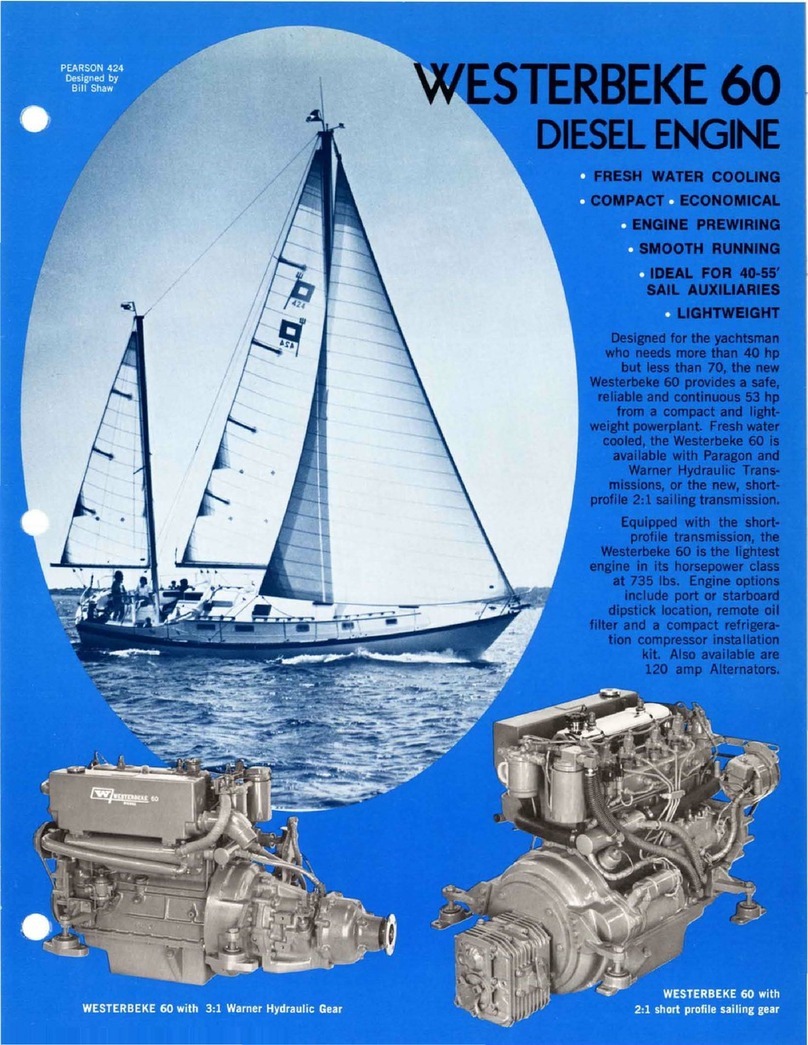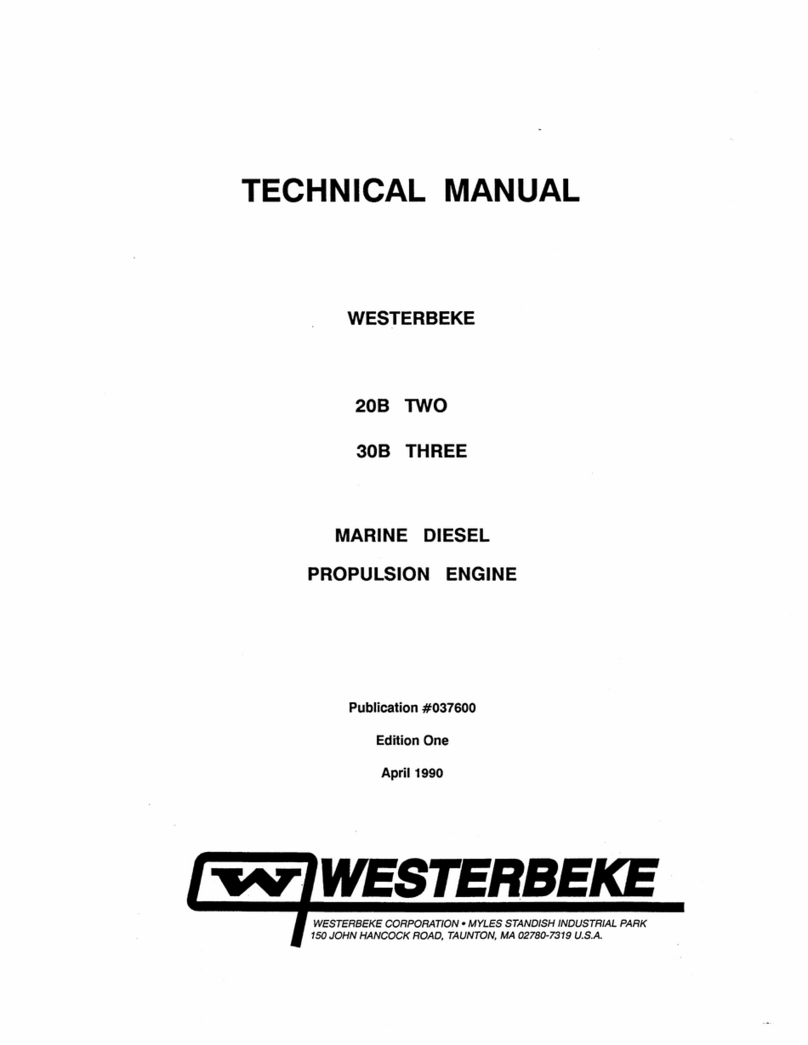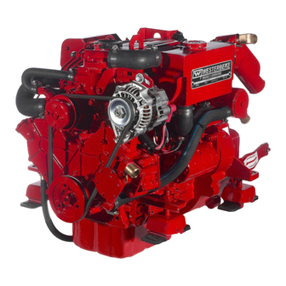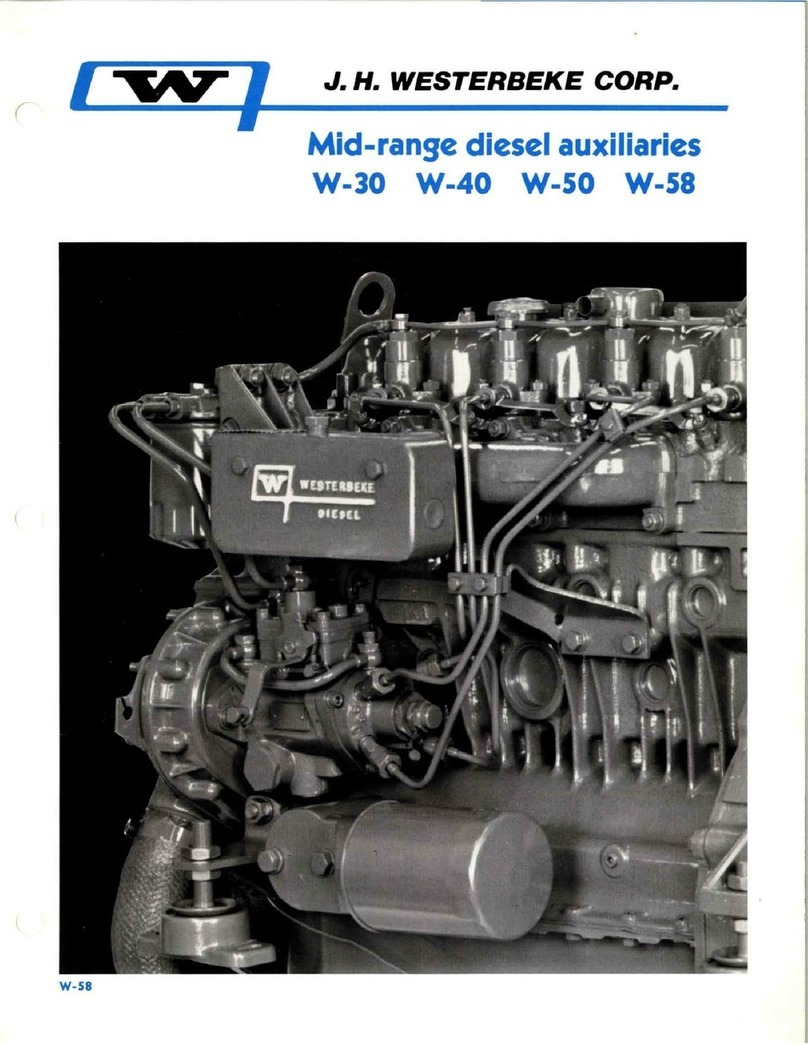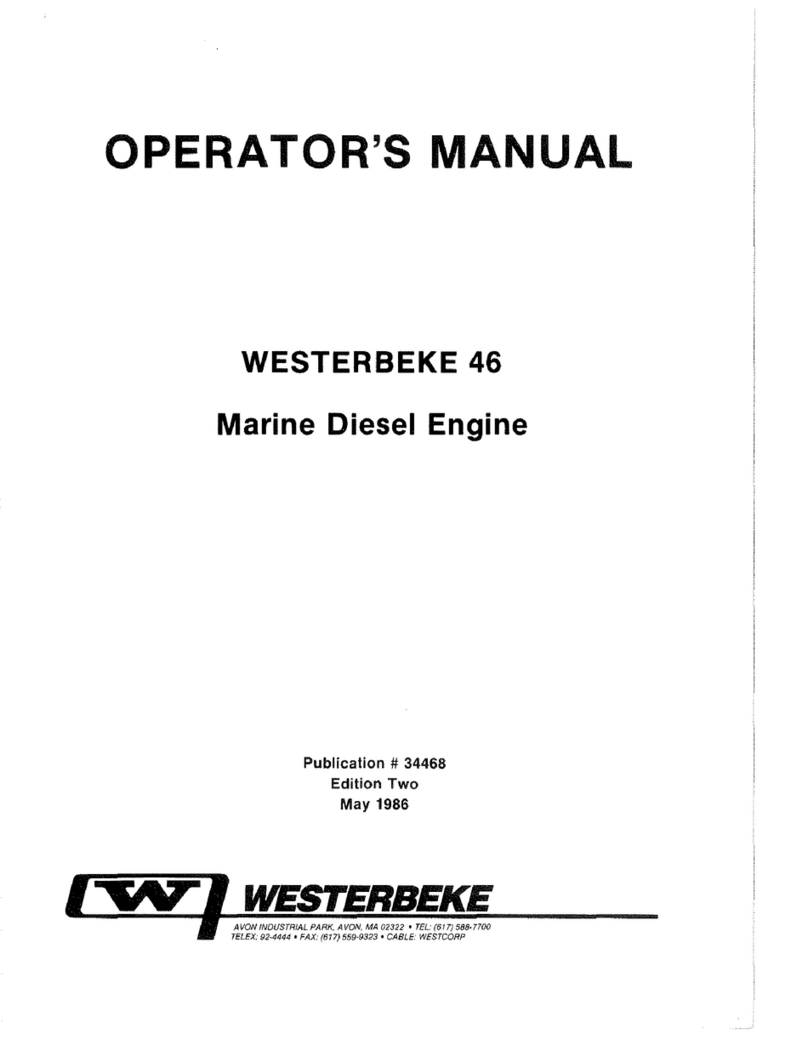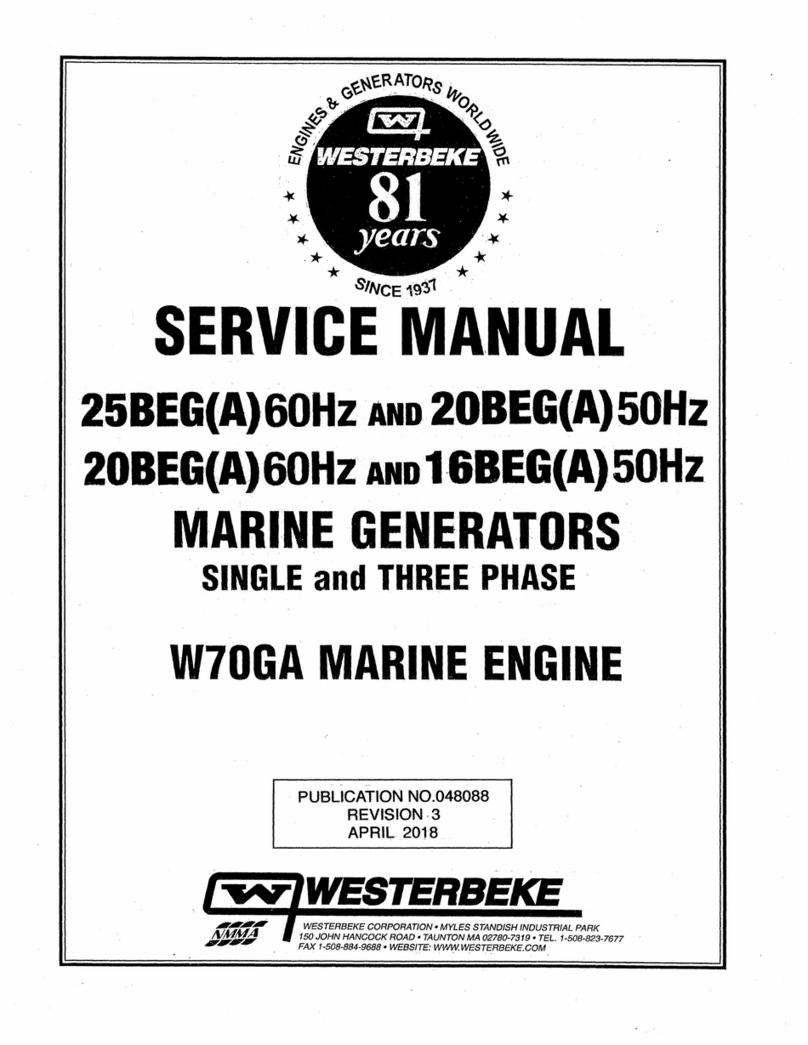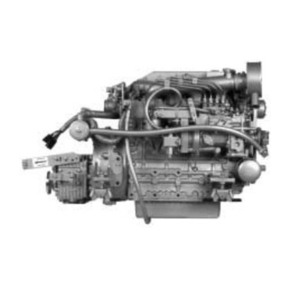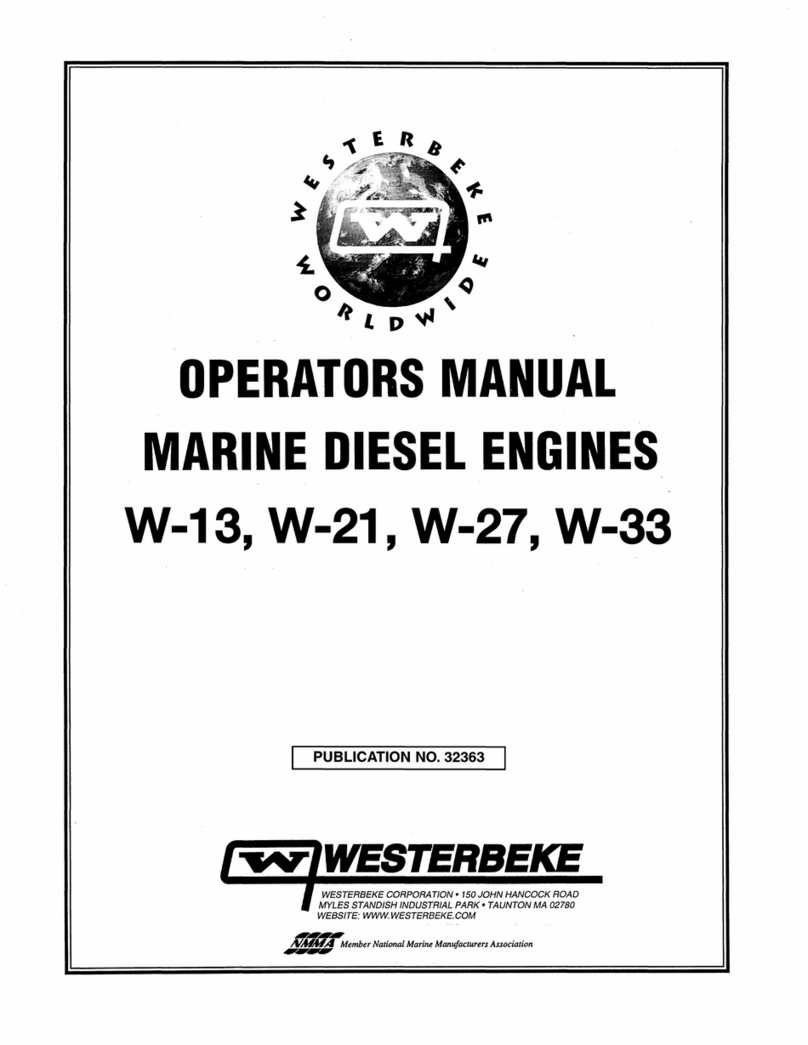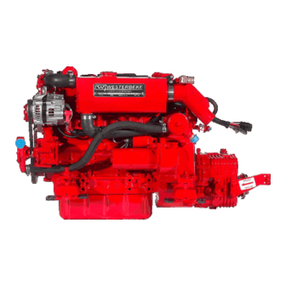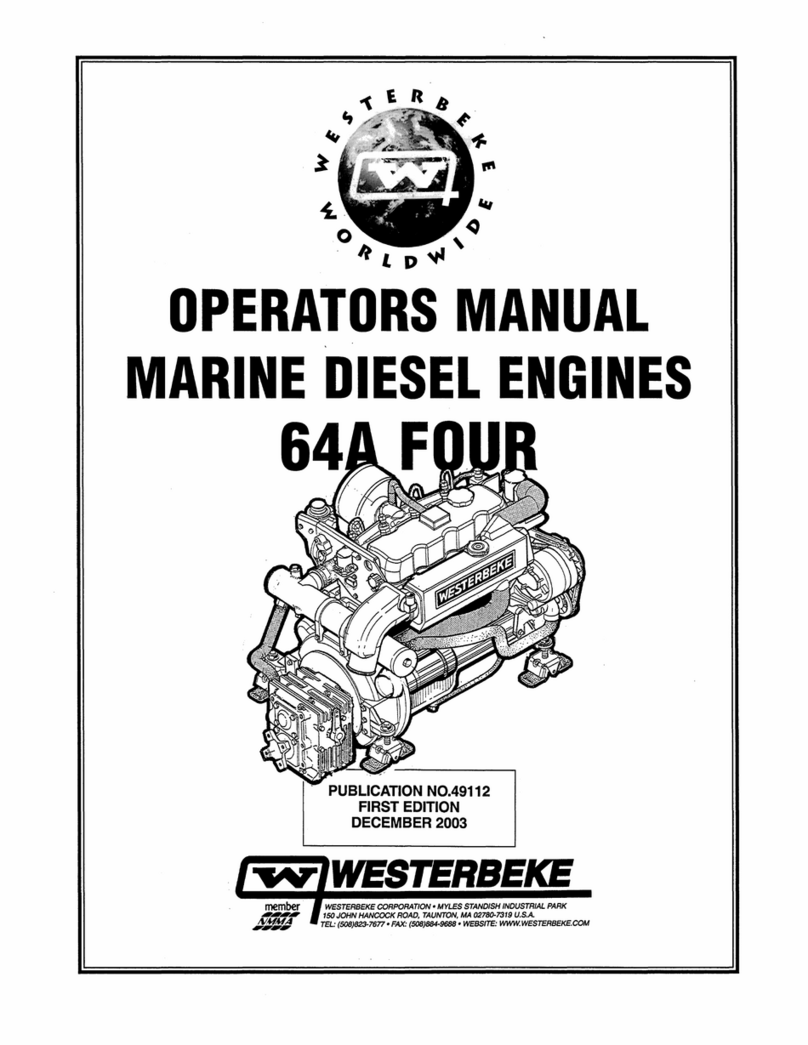
TESTING
FOR
OVERHAUL
HOW
TO
DETERMINE
ENGINE
OVERHAUL
PERIOD
Cause
of
Low
Compression
Generally, the time at which an engine should be overhauled
is determined by various conditions such as lowered engine
power output, decreased compression pressure, and increased
fuel and oil consumption. The lowered engine power output,
in the case
of
diesel engines, is not necessarily due to trouble
with the engine itself, but is sometimes caused by injector
nozzle wear
or
injection pump wear. It is most reasonable to
judge by a decrease in compression pressure. The decrease
in compression pressure is caused by many factors.
It
is,
therefore, necessary to determine a cause or causes on the
basis
of
data produced by periodic inspection and
maintenance. Oil analysis on a seasonal basis is a good
means
of
monitoring engine internal wear. When caused
by worn cylinders
or
piston rings, the following symptoms
will occur:
1 Low engine power
output
2 Increased fuel consumption
3 Increased oil consumption
4
Hard
engine
starting
5 Noisy engine operation
These symptoms often appear together. Symptoms (2) and
(4) can result also from excessive fuel injection, improper
injection timing, and wear
of
plugs and nozzles. They are
caused also by defective electrical devices such as the battery,
alternator, starter and glow plugs. Therefore it is desirable
to judge the optimum engine overhaul time by the lowered
compression pressure caused
by
worn cylinders and pistons
plus increased oil consumption. In diesel engines,
satisfactory combustion is obtained only under sufficient
compression pressure.
If
an engine lacks compression
pressure, incomplete combustion
of
fuel will take place even
if
other parts
of
the engine are operating properly.
To
determine the period
of
engine overhaul, it is important to
measure the engine compression pressure regularly.
At
the
same time, the engine speed at which the measurement
of
compression pressure is made should be checked because the
compression pressure varies with engine rpm. The engine
rpm
can be measured at the front end
of
the crankshaft.
NOTE:
To
test engine compression see the
ENGINE ADJUSTMENT section
of
this manual.
OVERHAUL
CONDITIONS
Compression pressure tends to increase a little
in
a new
engine until piston rings and valve seats have been broken in.
Thereafter, it decreases gradually with the progress
of
wear
of
these parts.
When decrease
of
compressiOll pressure reaches the repair
limit, the engine must be overhauled.
The engine requires overhaul when oil consumption is high,
blowby evident, and compression valves are at minimum or
below. Engine compression should be
30
kg/cm2,
427
psi
at
200 rpm.
Precautions
for
Disassembly
and
Reassembly
When servicing an engine, keep
in
mind the following
precautions.
Disassembly
1. Before disassembly and cleaning, carefully check for
defects which cannot be found after disassembly and
cleaning.
2.
Drain water, fuel and oil before disassembly.
3. Clean or wash the engine exterior.
4. Do not remove
or
disassemble the parts that require no
disassembly.
5. Perform disassembly
in
a proper order using proper tools.
Keep disassembled parts
in
order. Apply oil when neces-
sary. Take special care to keep the fuel system parts from
intrusion
of
dust and dirt.
Reassembly
1. Clean or wash the parts. Apply oil on surfaces where
needed
or
specified.
2. Carefully check gaskets, packings and oil seals even
if
checking is not specified. Replace with new ones
if
defective.
3. Be sure to install components
in
proper directions and
positions. (pay attention to dowel pins, mating marks and
specified directions.) Where tightening torque is not
specified, tighten evenly to an ordinary torque. Apply
sealant where specified.
4. After completion
of
reassembly, recheck for any
abnormalities. Prepare for starting the engine, and idle
the engine sufficiently for a test run.
ENGINE
TROUBLESHOOTING
The following ENGINE TROUBLESHOOTING section may
be
of
assistance in determining the need for planning and
engine overhaul.
SERVICE
MANUAL
The engine block
of
the
7lC-FOUR
differs from it's
predecessor, the 71B-FOUR, with variations in service data
(tolerances, limits and torques). In this service manual 71B
or 71C designates this service data and a small
718
or
71C
will identify the artwork. Components that are common to
both engines such as the Raw Water Pump will have no
designation.
The 71B-FOUR engine powers the 20.0KW BED generator.
The 7lC-FOUR engine powers the 20.0KW BEDAgenerator.
NOTE:
Make certain the engine model has been correctly
identified, see SERIAL NUMBER LOCATION.
Engines
&
Generators
3
